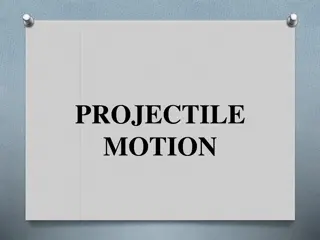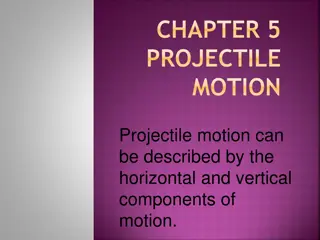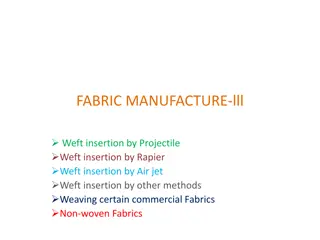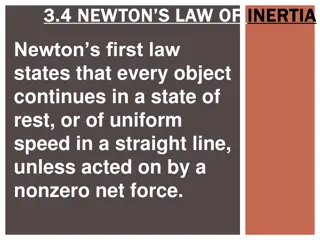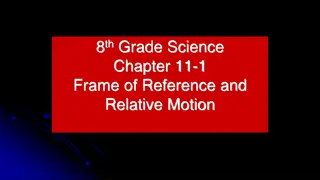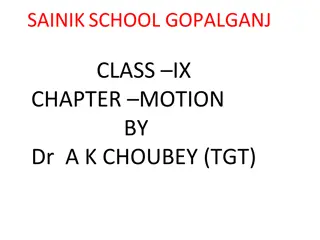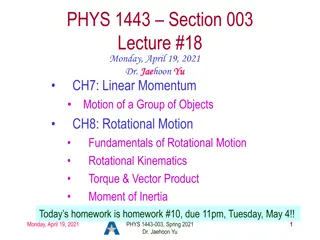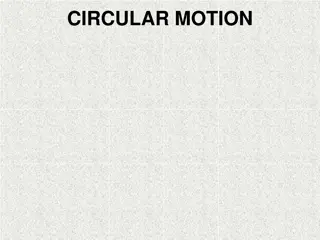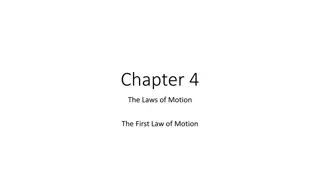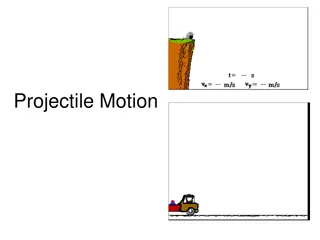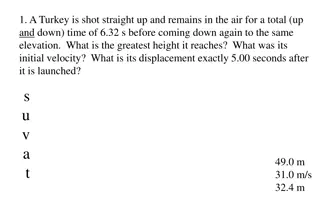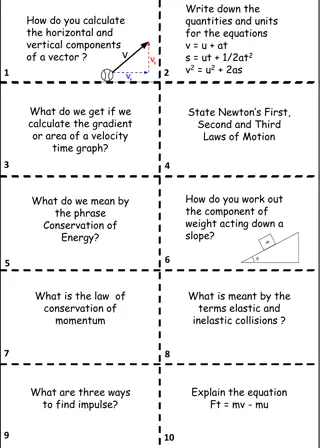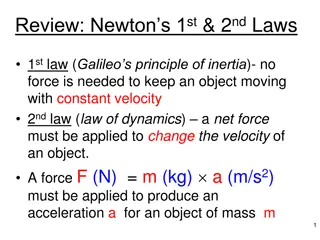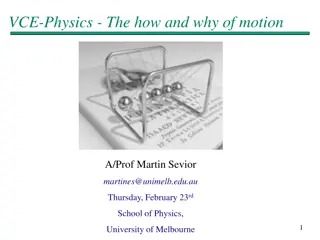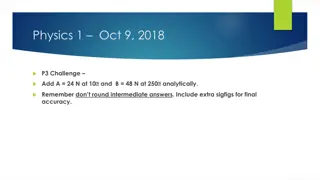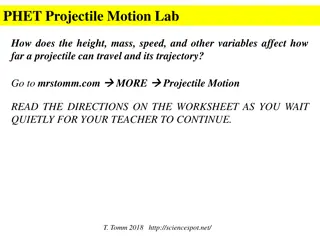PROJECTILE MOTION
Fundamental concepts of projectile motion, where objects follow paths influenced by gravity and initial velocity. Dive into the separable X and Y motion components, superposition principle, initial velocity considerations, equations for motion, and trajectories on level ground. Discover the interplay between horizontal motion, vertical acceleration, and range variations with initial speed and angle in this engaging exploration of projectile motion.
Uploaded on Feb 25, 2025 | 0 Views
Download Presentation

Please find below an Image/Link to download the presentation.
The content on the website is provided AS IS for your information and personal use only. It may not be sold, licensed, or shared on other websites without obtaining consent from the author.If you encounter any issues during the download, it is possible that the publisher has removed the file from their server.
You are allowed to download the files provided on this website for personal or commercial use, subject to the condition that they are used lawfully. All files are the property of their respective owners.
The content on the website is provided AS IS for your information and personal use only. It may not be sold, licensed, or shared on other websites without obtaining consent from the author.
E N D
Presentation Transcript
Projectile Motion A projectile is any object given an initial velocity that then follows a path determined by the effects of gravity and air resistance. Begin by neglecting resistance and the curvature and rotation of the earth.
The X- and Y-Motion Are Separable The red ball is dropped at the same time that the blue ball is fired horizontally. We can analyze projectile motion as horizontal motion with constant velocity and vertical motion with constant acceleration: ??= 0, ??= ?
Projectile Motion: Superposition If air resistance is negligible, the trajectory of a projectile is a combination of horizontal motion with constant velocity and vertical motion with constant acceleration. (a)We analyze two-dimensional projectile motion by breaking it into two independent one-dimensional motions along the vertical and horizontal axes. (b)The horizontal motion is simple, because ax = 0 and vx is a constant. (c)The velocity in the vertical direction begins to decrease as the object rises. At its highest point, the vertical velocity is zero. As the object falls toward Earth again, the vertical velocity increases again in magnitude but points in the opposite direction to the initial vertical velocity. (d)The x and y motions are recombined to give the total velocity at any given point on the trajectory.
Projectile Motion Initial Velocity The initial velocity components of a projectile (such as fireworks shell) are related to the initial speed and initial angle. The trajectory of a fireworks shell. The fuse is set to explode the shell at the highest point in its trajectory, which is found to be at a height of 233 m and 125 m away horizontally.
The Equations for Projectile Motion If we set ?0 = ?0 = 0, the equations describing projectile motion are shown below: ? = ??0? ? = ??0? 1 ??= ??0 ??= ??0 ?? 2??2 =
Trajectories of Projectiles on Level Ground (a) The greater the initial speed v0, the greater the range for a given initial angle. (b) The effect of initial angle ?0on the range of a projectile with a given initial speed. Note that the range is the same for initial angles of 15 and 75 , although the maximum heights of those paths are different.
The Effects of Air Resistance Calculations become more complicated. Acceleration is not constant. Effects can be very large. Maximum height and range decrease. Trajectory is no longer a parabola.







